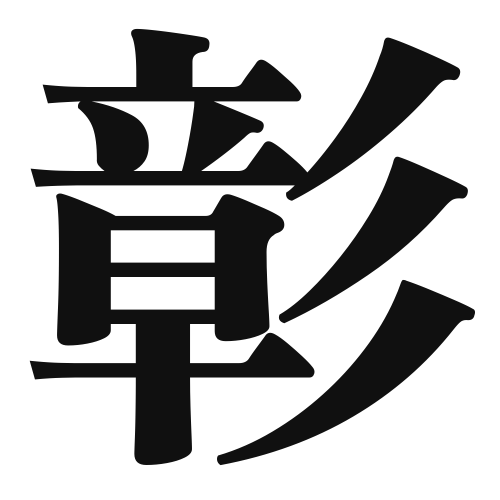1. Overview of Meaning
The kanji “彰” (shō) generally means “to shine,” “to reveal,” or “to make clear.” It conveys the idea of clarity and brightness, often associated with enlightenment or understanding.
2. Formation and Radical
Formation of the Kanji: The kanji “彰” is a phonetic-ideographic character (形声文字). It combines the meaning of clarity with a phonetic component that suggests its pronunciation.
Radical: The radical for “彰” is “月” (meaning “moon” or “flesh”), which often relates to aspects of brightness or clarity in kanji.
3. Examples of Usage
Common Words and Phrases: Some common words that include “彰” are “彰明” (shōmei – clarity) and “彰化” (shōka – to reveal).
Example Sentences in Daily Conversation:
- この問題の解決策は、より彰にする必要があります。 (We need to make the solution to this problem clearer.)
- 彼の意見は非常に彰で、みんなが理解しやすかった。 (His opinion was very clear, making it easy for everyone to understand.)
4. Synonyms and Antonyms
Similar Kanji: A similar kanji is “明” (mei), which also means “bright” or “clear,” but it is more commonly used in everyday language.
Antonyms: An antonym for “彰” could be “暗” (an), which means “dark” or “obscure,” representing the opposite of clarity.
5. Cultural and Historical Background
Relation to Japanese Culture: The kanji “彰” is often used in contexts that emphasize clarity and understanding, which are valued in Japanese culture, especially in communication and education.
Proverbs and Idioms: One relevant idiom is “明朗快活” (meirō kai katsu), which means “bright and cheerful,” highlighting the positive connotation of clarity and brightness in character.
